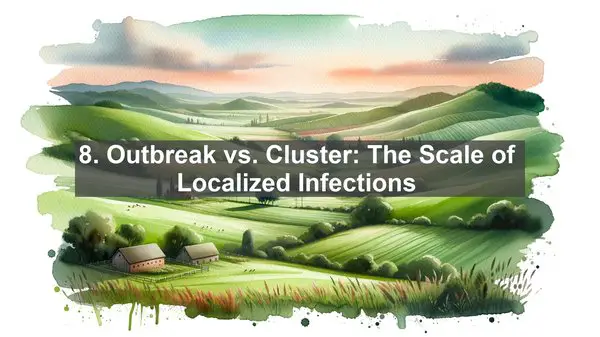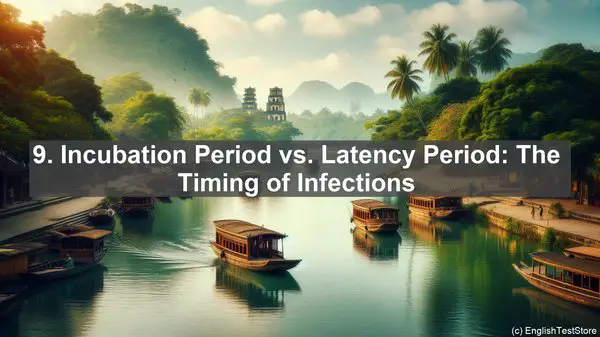Introduction: The Fascinating World of Viral Evolution
Hello everyone, and welcome to today’s lesson! Viral evolution is a captivating field that delves into the intricate changes and adaptations viruses undergo over time. However, within this domain, there are several words that are often misinterpreted or used incorrectly. Today, we’ll shed light on these terms, ensuring you have a solid understanding of their meanings.
1. Mutation vs. Recombination: Unraveling the Genetic Variability
Mutation and recombination are two fundamental processes that drive genetic diversity in viruses. While mutation refers to the spontaneous changes in the viral genome, recombination involves the exchange of genetic material between different viral strains. Understanding the distinction between these processes is crucial in comprehending how viruses evolve and adapt to new environments.

2. Epidemic vs. Pandemic: The Scale of Viral Outbreaks
Epidemic and pandemic are often used interchangeably, but they have distinct meanings. An epidemic refers to the rapid spread of a virus within a specific region or community. On the other hand, a pandemic signifies a global outbreak, affecting multiple countries or continents. Distinguishing between these terms helps us gauge the severity and reach of a viral infection.

3. Endemic vs. Epidemic: The Permanence Factor
Endemic and epidemic are terms that describe the prevalence of a virus in a population. While an epidemic is characterized by a sudden surge in cases, an endemic state implies a consistent, low-level presence of the virus within a particular area or group. Recognizing this difference aids in understanding the long-term dynamics of viral diseases.
4. Zoonotic vs. Anthroponotic: The Source of Viral Infections
When it comes to the origin of viral infections, two terms often arise: zoonotic and anthroponotic. Zoonotic diseases are those that primarily affect animals but can be transmitted to humans. On the other hand, anthroponotic diseases are primarily human diseases that may occasionally infect animals. Knowing these distinctions is crucial in identifying potential sources of viral outbreaks.
5. Reservoir vs. Vector: Understanding Transmission Dynamics
Reservoir and vector are terms used to describe the different components of a viral transmission cycle. A reservoir is a natural host or environment where the virus resides, while a vector is an organism that carries and transmits the virus to other hosts. By understanding these roles, we can better comprehend how viruses persist and spread within populations.
6. Strain vs. Variant: Differentiating Genetic Lineages
Strain and variant are terms that refer to different genetic lineages within a virus. A strain typically denotes a genetically distinct group of viruses, often associated with specific characteristics or geographic regions. On the other hand, a variant refers to a specific genetic change within a virus. Recognizing these terms helps us track the evolution and spread of viral lineages.
7. Host vs. Vector: The Distinction in Viral Interactions
In the context of viral infections, host and vector are two key players. A host is an organism that harbors and is infected by the virus, while a vector is an organism that transmits the virus from one host to another. Understanding this dichotomy is crucial in comprehending the complex dynamics of viral diseases and their potential for spread.
8. Outbreak vs. Cluster: The Scale of Localized Infections
Outbreak and cluster are terms used to describe localized instances of viral infections. While an outbreak refers to a sudden increase in cases within a specific area or community, a cluster signifies a group of cases that are epidemiologically linked. Recognizing these terms aids in assessing the scope and potential causes of a localized viral event.
9. Incubation Period vs. Latency Period: The Timing of Infections
The incubation period and latency period are terms that describe different stages of a viral infection. The incubation period refers to the time between exposure to the virus and the onset of symptoms, while the latency period is the period during which the virus remains in a dormant state within the host. Understanding these phases is crucial in diagnosing and managing viral diseases.
10. Exogenous vs. Endogenous: The Origin of Genetic Material
Exogenous and endogenous are terms used to describe the origin of genetic material within a virus. Exogenous genetic material comes from an external source, such as another virus, while endogenous genetic material originates from within the host’s genome. Recognizing these terms aids in understanding the diverse sources of genetic variability in viruses.
